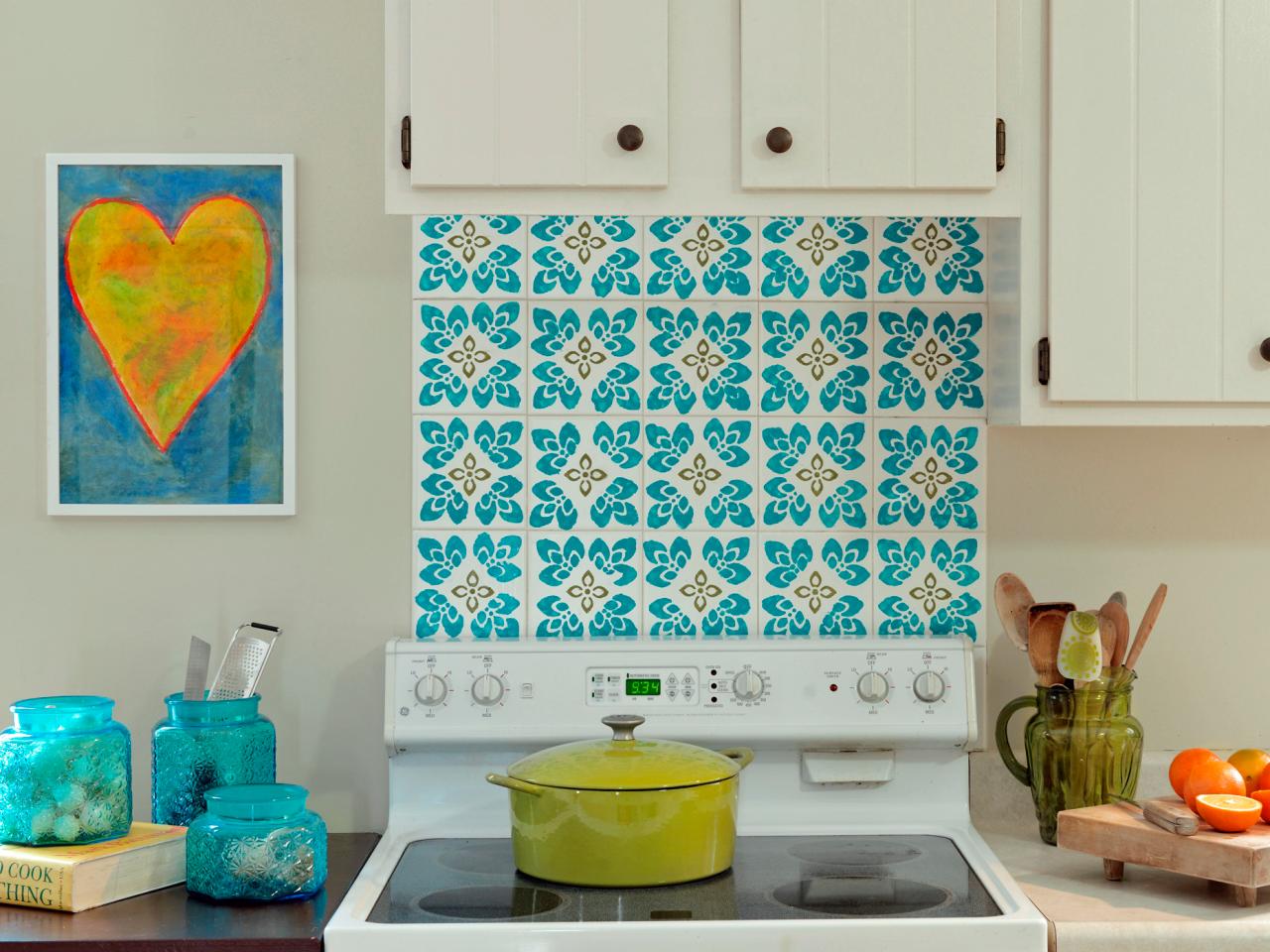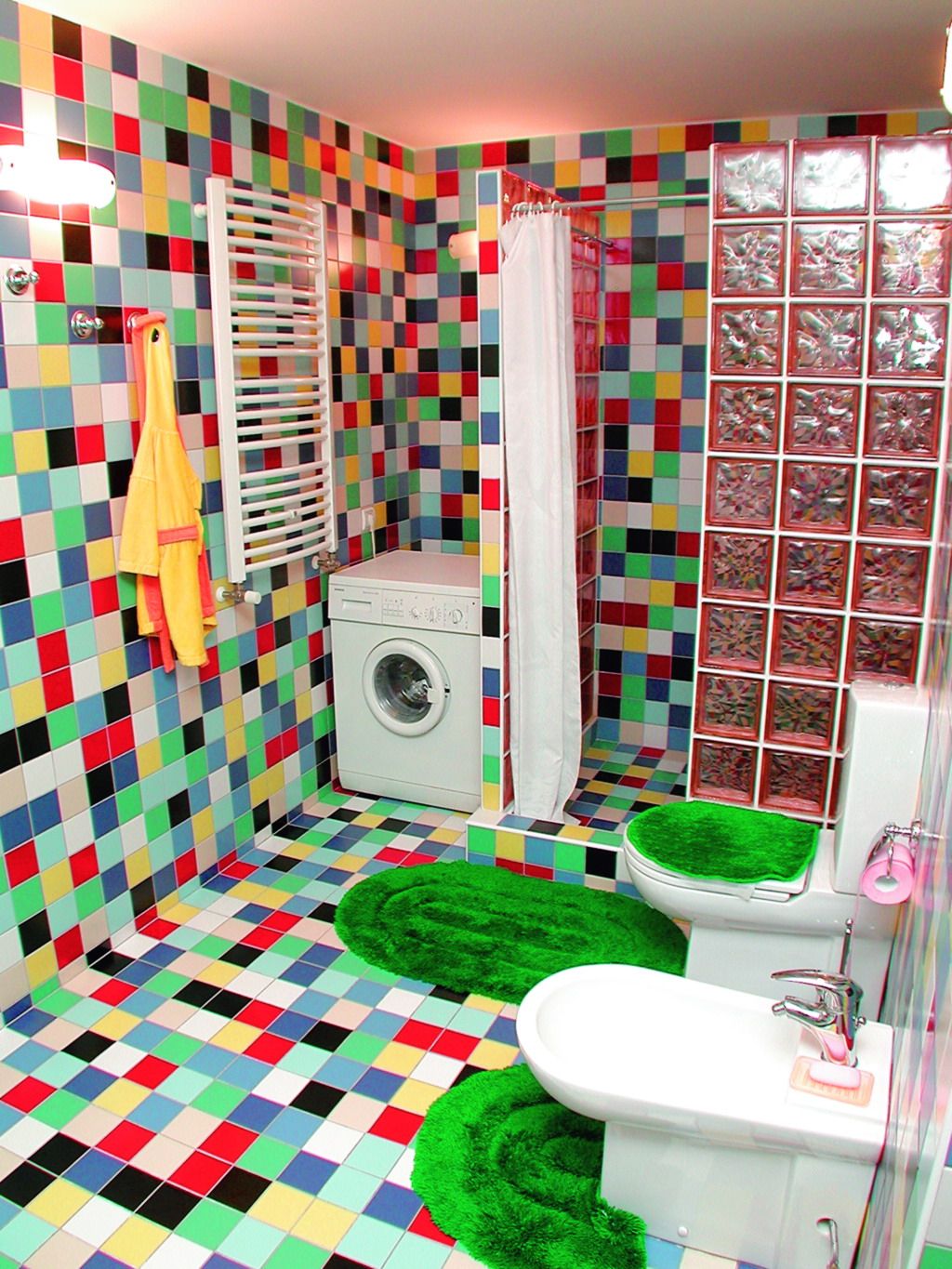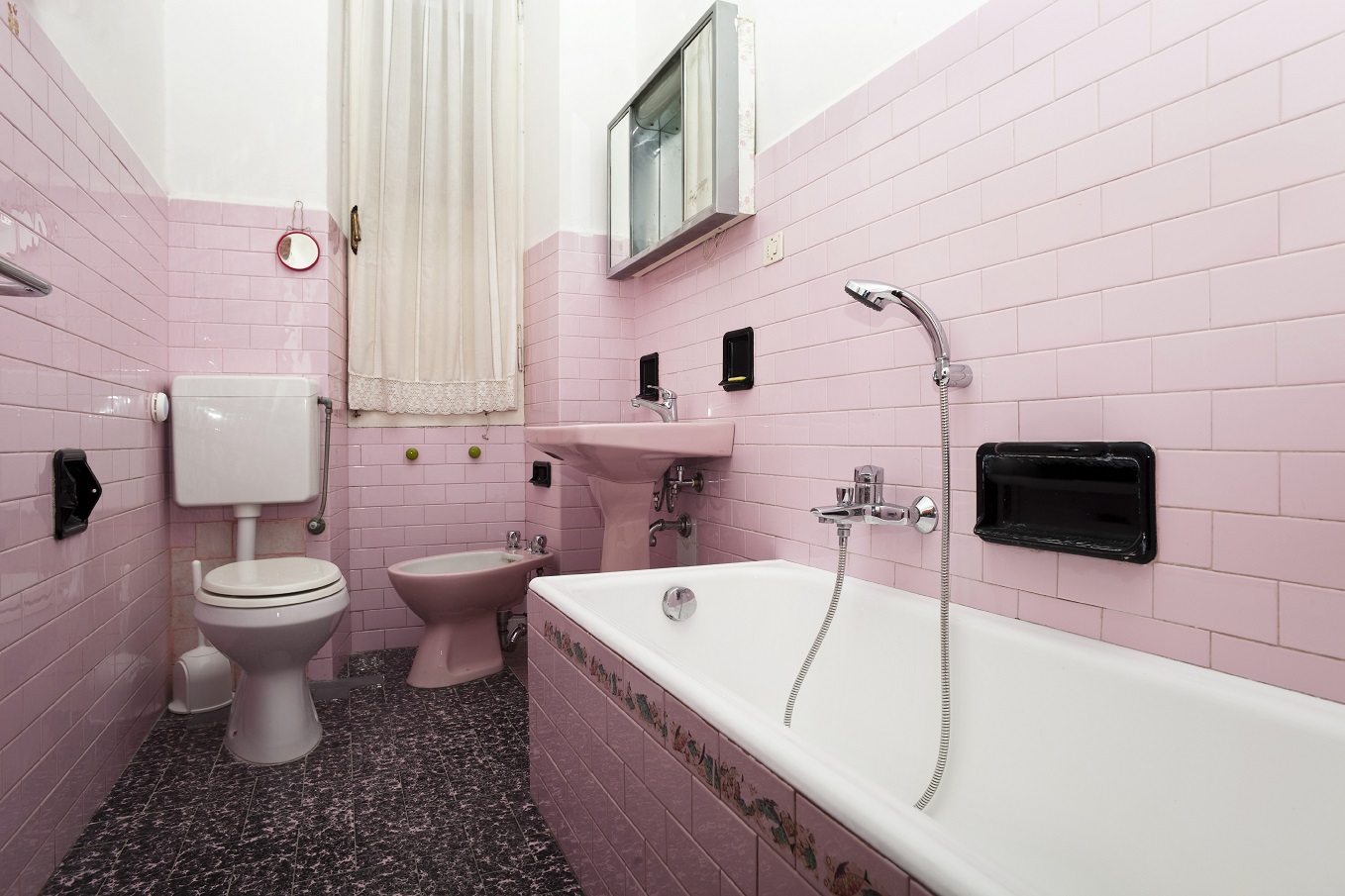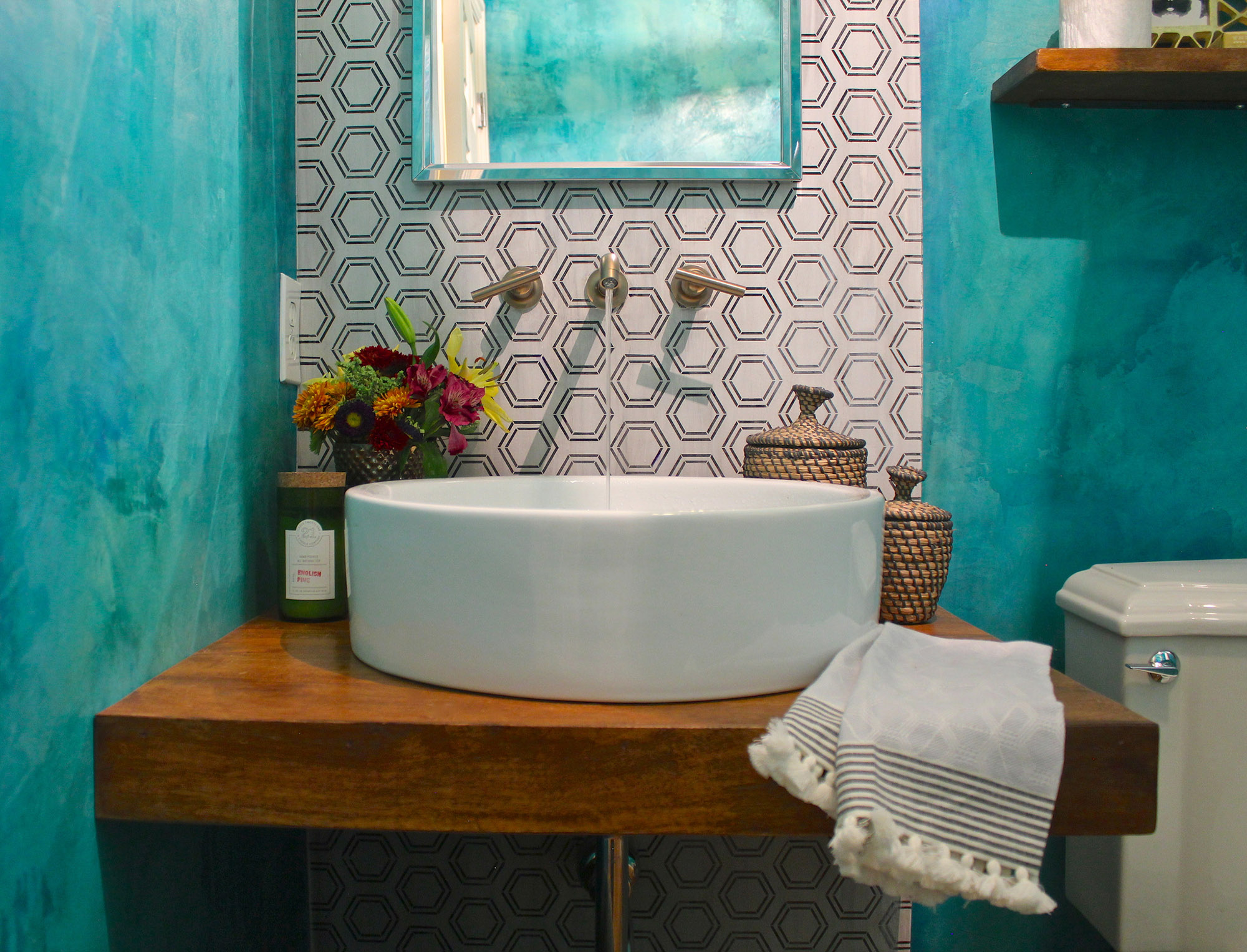How to paint different types of tiles: the secrets of the masters
Content
I think everyone will agree that the tile in the interior has become our daily routine. It is lined with walls in the bathroom, ceilings, pavement paths are made. Of course, in each case, different types of tiles are used, but the essence does not change. Designers do not intend to put up with this state of affairs and every year they surprise us with a new interpretation of our usual things. For example, painting tiles in different colors is gaining popularity today. In this article, you will learn how to paint tiles correctly, which paints to use, and much more.
How to choose materials and tools
Prepare the following supporting materials and tools for the work:
- brushes of different sizes;
- roller with different skins;
- masking tape;
- primer;
- paint;
- varnish;
- solvent;
- patterns for creating patterns.
As you complete the work, you will need other tools, so consider everything in advance.
How to paint a tile
For painting tiles, it is better to give preference to the following paints:
- acrylic - practical and convenient to use;
- epoxy - odorless, dry quickly;
- satin enamel - creates a pleasant velvety effect, streaks and dirt are not visible;
- oil-based paints - give gloss, firmly adhere to the painted surface.
Choosing paint for the ceiling
Water-based acrylic paint is suitable for painting ceiling tiles, it evenly paints without leaving streaks, is safe for health.
Street paint
Paving slabs can be painted:
- water-based rubber paints. They retain resistance at any temperature, have high wear resistance. The coating painted by them does not slip;
- Alkyd paints and varnishes for concrete. They protect the surface, protect it from destruction, prevent the appearance of salts;
- polyurethane. These are very durable paints, over time their shade may change, but the mechanical properties remain the same.
Choose paints from well-known manufacturers, do not try to buy cheap compositions, they may contain low quality components and have poor performance. There are few benefits from such materials, because soon the walls they processed will begin to peel off, deteriorate, and the surface will have to be repainted again.
How to paint a tile
How to paint tiles in the bathroom and in the kitchen? The paint from the tile will peel off very quickly due to high humidity, so you need to choose high-quality waterproof paints.
The advantages of painting tiles:
- allows you to easily and quickly update the interior of the room;
- when replacing furniture, you can not lay new tiles, just paint it and emphasize the color scheme;
- you can make patterns on a boring one-color tile;
- paint masks minor damage and defects.
However, in places where the tile is constantly in contact with water, it is better not to paint.
Surface preparation
Before painting the tile, it must be cleaned of dust, grease, rust, limescale, grout, etc.The better you wash the old tile, the better the result will be, so you can resort to an aggressive method of washing with a hard brush. It can slightly scratch the tile, but the primer and paint are better on the rough surface. To paint evenly laid down, the surface must be primed. So the paint will better adhere to the tile.
How to paint
Before applying the paint, attach the masking tape along the borders of the surface to be painted. Foam roller will help to quickly paint the surface. If the paint is too thick, add a little solvent to it, observe the proportions written on the can of paint. To paint individual tiles or apply a picture, it is better to use brushes.
Work will go faster if you do not pay attention to the seam between the tiles on the wall and paint the wall in the same color. If you decide to paint the seams in a different color, glue them first with masking tape.
Is it possible to paint the tiles on the floor
How to paint tiles in the bathroom on the floor? When working with floor tiles, it must be borne in mind that in this place it is subject to strong mechanical stress. To get a more wear-resistant coating, it is better to apply three or more layers of paint.
After painting the tile, protect it from external influences. To do this, paint completely dried paint with water-based varnish.
How to paint gypsum tile
If you first decided to paint gypsum, it is best to do it manually. In this case, it will be painted naturally and will fit well into the interior. Three non-contrasting colors are sufficient for painting. They will give a few more shades, since gypsum absorbs paint in different ways.
How to paint ceiling tiles
Not all types of ceiling tiles are suitable for painting. Plastic and laminated tiles are not intended for coloring, the paint will not stick to them, but foam can be painted. Painting will protect and strengthen their structure, will allow it to be washed without difficulty, so many even paint new tiles to improve its appearance and extend the operating period. By painting, you can give the surface any color.
How to paint polyfoam ceiling tiles? Before painting, check if the tile falls off the base, if it peels off somewhere, be sure to glue it. Using a small spatula, apply tile adhesive as deep as possible. Remove excess with a foam sponge.
How to paint the ceiling? Apply one paint coat with a wide roller. Paint from the walls to the center of the room. At the end of the work, small flaws will be clearly visible, a secondary painting will help to fix them. To apply a second coat, take a new roller with a short pile length. Foam rollers for ceiling tiles are not suitable.
How to paint paving slabs
To make paths from paving slabs beautiful and original, you can paint them in any colors that harmoniously fit into the surrounding space. The paint will protect the concrete surface from external harmful influences and help to extend the service life.
How to paint paving slabs. It should be noted that painting will take not several hours, but several days. Selected paint should be mixed with sand. The desired consistency is determined by the test method. Thanks to this technique, after painting, the tile will become less slippery.
Preparatory work
Carefully sweep all dirt and debris from the surface and crevices during the preparatory work. A vacuum cleaner is ideal for cleaning tiles. After cleaning, wash the track with a garden hose and allow the surface to dry.
Before starting work, look at the weather forecast for a few days, if rains are expected in the near future, it is better not to start work. It is better not to paint in windy weather, the wind will blow debris onto the track, so the appearance of the painted surface will deteriorate.
If you decide to paint a small path and do not want to wait for dry, clear and calm weather to come, you can pull an awning from the film over it. Good quality guaranteed.
How to color the tracks
Paint with a short-haired roller or a long-handle brush. For uniformity of color carefully mix paint. It is recommended to paint paving slabs three times. Between each painting, let the previous layer dry. At the end of the work, you cannot walk on the track for several days.
Partial Tile Painting
Any tile can be partially painted, for example, apply a decorative pattern or pattern to it. For this you need:
- Choose a pattern. The geometric pattern is easiest to make: cut four strips of electrical tape of the desired length and make a square or rhombus in the center between the four tiles.
- Mark up. Using a level, stick the prepared electrical tape between the tiles. If you cannot stick it evenly, remove them and re-glue them again.
- Primer the surface. With a small brush, gently apply the primer with a thin layer inside the squares of electrical tape. Wait for it to dry. Do not speed up the process with a hairdryer, as dust may stick to the painted surface.
- Paint the tiles. Apply epoxy paint of any color inside the square.
The incredible simplicity of coloring tiles allows anyone to cope with this work, even without the experience of painting.

















